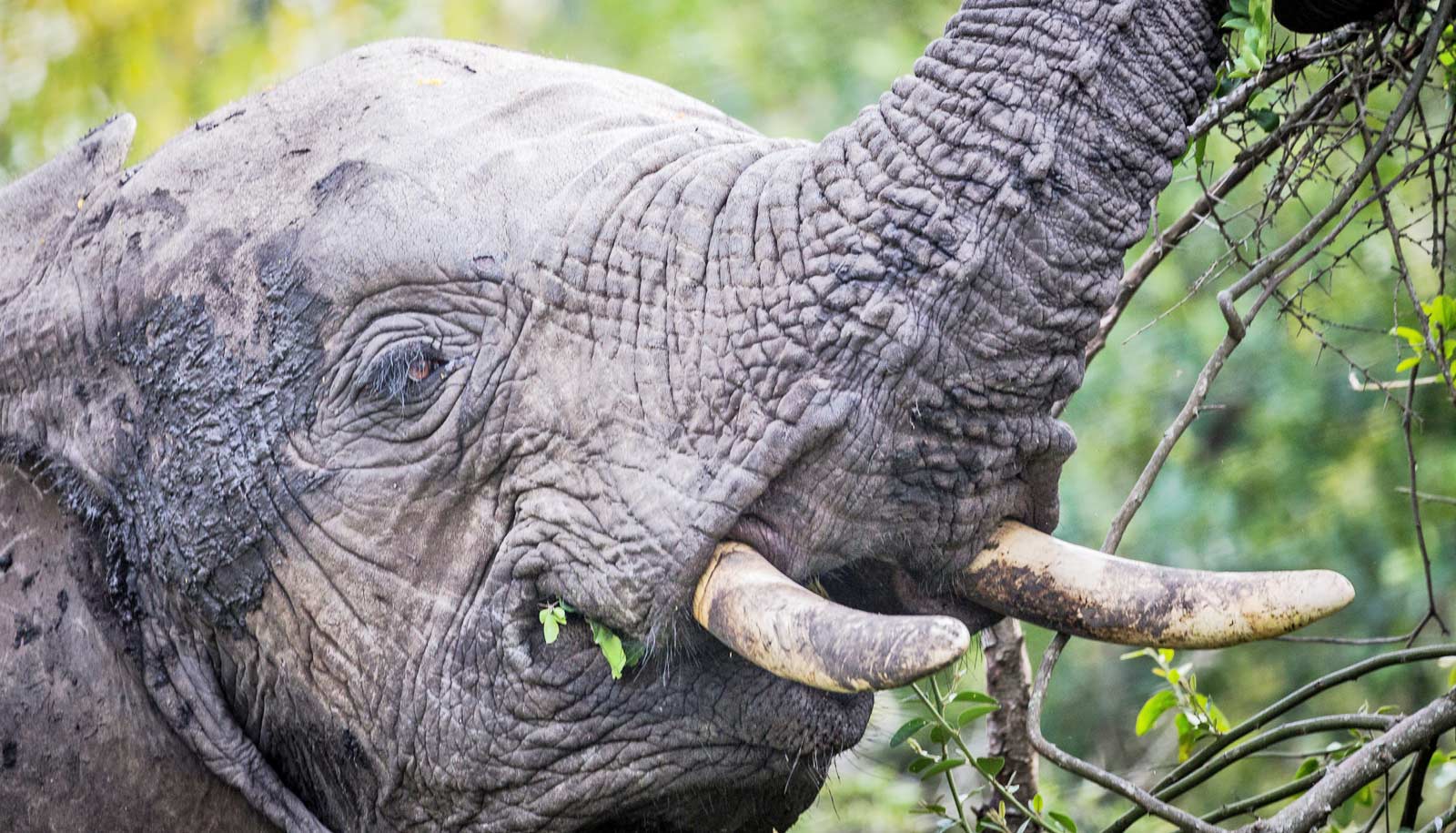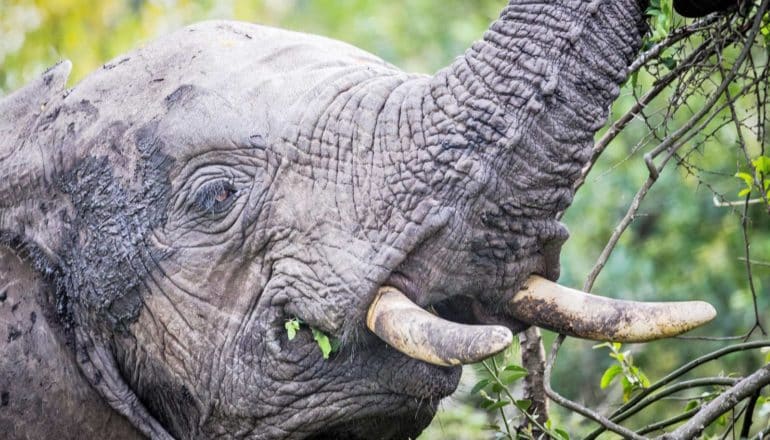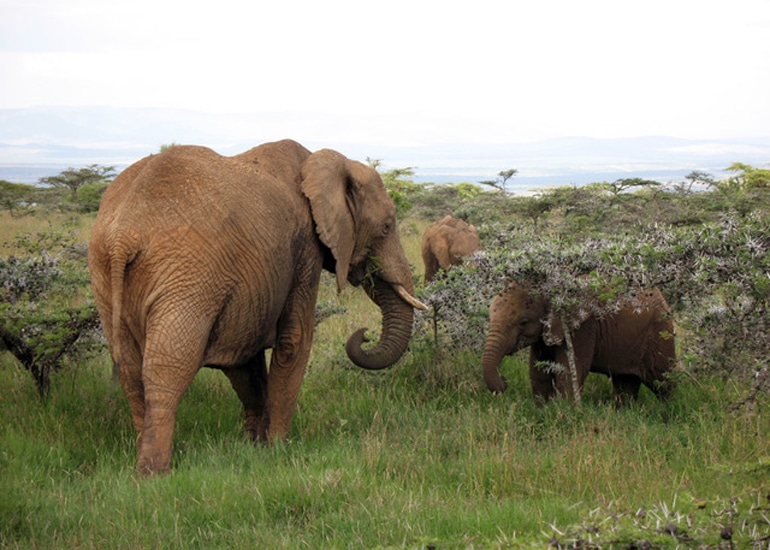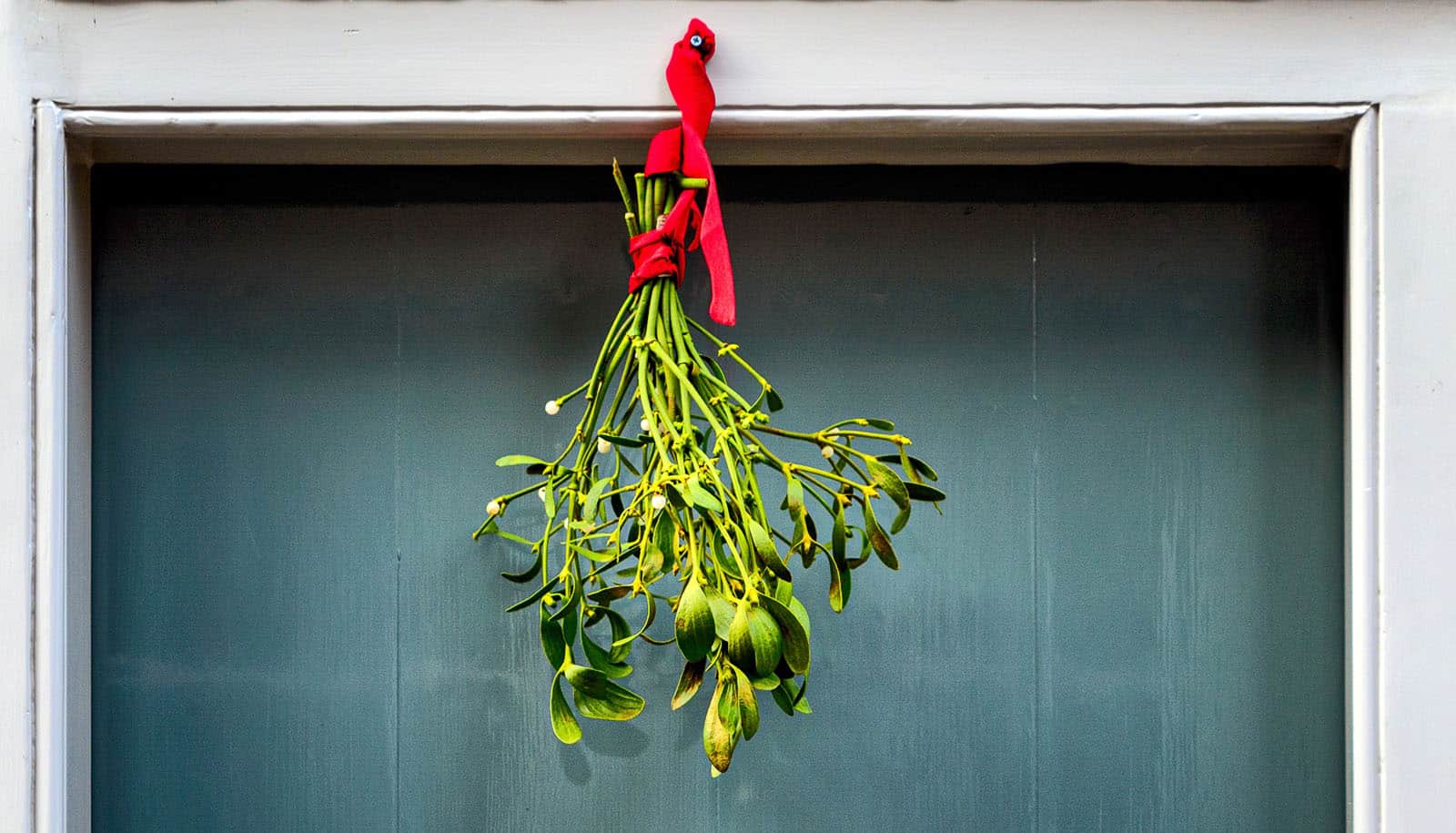
(Credit: Alex Proimos/Flickr )
Why elephants munch more acacia in cool weather
New research shows how temperature can affect the symbiotic relationship between ants and trees on the African savanna.

Temperature strongly affects the give-and-take relationship between acacia trees on the African savanna and their carnivorous ant protectors, research finds.
New research shows that these ant-protected plants are much more vulnerable to becoming the snack of herbivores during the cool hours of early morning and evening.
“I only saw elephants feed from these acacia trees in the cold mornings,” says Ryan Tamashiro, a researcher at the University of Florida and lead author of the paper in Ecology.
“I thought it was interesting since elephants are eating machines, and these trees looked pretty tasty. I mentioned that the ant defense may be temperature dependent to Dr. (Todd) Palmer, and from there we set out to see if it was true.”

The researchers conducted the study at the Mpala Research Centre in Kenya, where they looked at four species of ants, Crematogaster mimosae, C. nigriceps, C. sjostedti, and Tetraponera penzigi, living on acacia trees, which provide the ants with nectar and domatia, little living quarters within the acacia’s thorns.
Although large animals such as elephants, zebra, and giraffe feed on acacia, the researchers used Somali goats to simulate eating patterns from dawn to mid-day and focused on the most aggressive ant species, Crematogaster mimosae.
“We chose goats because they are widespread browsers throughout East Africa, and share feeding adaptations with native herbivores like steinbuck and kudu, such as narrow muzzles and high crowned teeth, says Palmer, a professor of biology. “And of course, goats are much easier to wrangle than a 200-pound kudu.”

The researchers wanted to answer two questions: 1. How does the temperature of the acacia branches affect the activity of each ant species? 2) What are the consequences of variable activity in the most common ant species against a model browser throughout the day?
They looked at 15 trees for each ant species, measuring from sunrise to sunset the number of ants that attack a glove disturbing the tree and learned that the better defending species also had the biggest changes in activity over the day. From the lowest temperatures to the highest, the number of Crematogaster mimosae ants attacking the glove increased over five-fold.
In a second experiment, the researchers used eight hungry goats that had the chance to feed from trees defended by ants and one with the ants removed. When introduced to plants without ants, the animals chowed down fast throughout the day.
When introduced to trees with ants, the goats’ behavior changed throughout the day. In the cold mornings, the goats fed as if the tree did not have ants and took fewer bites as the branches—and their ant defenders—began to warm up. The ants perform best during the warmer, daytime temperatures, discouraging the goats by biting near their eyes, nose, and mouth.
“It is a bit of a stretch to say a goat will respond to ants in the exact same way as a giraffe or elephant. Giraffes grab the branches with their long tongues and strip the leaves off branches. Elephants will do the same with their trunks but can destroy entire parts of the canopy,” Tamashiro says. “Still, there are natural browsers like the steinbuck that pick at individual leaves like the goats.”
“Employing ants is a great defensive strategy for a plant, since ants can attack enemies both large and small,” Palmer says. “But our study points out a really important caveat, since the activity of ants is tied to environmental temperature. So when it’s cold out, these plants are basically sitting ducks for herbivores, which is a pretty significant cost for this plant defense strategy.”
Source: University of Florida
The post Why elephants munch more acacia in cool weather appeared first on Futurity.
Share this article:
This article uses material from the Futurity article, and is licenced under a CC BY-SA 4.0 International License. Images, videos and audio are available under their respective licenses.


